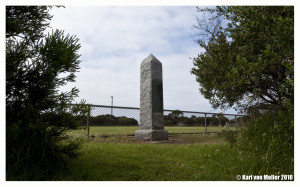RESEARCH
THE HISTORY OF ELECTRONICS IN AUSTRALIA!
Hello to all. My Blog has been quiet of late, simply due to the immense task of my current project! Now that my documentary covers the history of technological development in Australia, the task of researching information has been all consuming! I don’t think I realised just how big this project was going to get when I started but now that it’s underway, I’m fully devoting what spare time I have, into the documentary series.
I have had to go back to the beginning, when Australia was’t even federated, to understand how the development of an industry took place. As I have mentioned before, the beginning of “Electronics” in Australia for me begins with the introduction of the Telegraph in 1854. It’s interesting to note that Telegraphy is essentially a “digital” form of electronics and quickly spread, creating a “web” of lines across the nation. Some that I have interviewed called it the “Victorian Internet” which is apt considering that Telegraphy started in Victoria first with the first poles going in between Melbourne and Williamstown in 1853. ribbing aside, the uptake of this early form of communication in Australia was swift and heralded an amazing era. The relevance of the early adoption of technology and the spread of Telegraphy across Australia has many parallels with Australia’s current National Broadband Network (NBN) plan, which is fascinating to me.
My documentary seeks to showcase this early era by collating a series of conversations on camera and presenting them in a linear fashion along the timeline. Many of the incredible innovations that followed produced some of the most influential Companies of Australia’s short history! So much so that “Government” and these influential Companies are so inextricably bound that they may as well be considered the same thing! That’s why to understand the “State of Electronics” in Australia, you need to understand the “History of Electronics” in Australia. A good example of this influence is that of AWA (Amalgamated Wireless (Australasia) Ltd). As mentioned in my previous Blog entry, their influence in Australia was immense for about 60 years and helped shape Government policy, create a Radio industry, create a TV industry, create a Research & Development ethos, setup Telecommunications in general, strategic development of niche areas of the industry, and train a vast number of individuals to become tech savvy! AWA’s demise as major player shouldn’t be immediately relegated to the history books as much of that companies legacy is still being felt today. Indeed, the court case surrounding the demise of that Company is still in progress from what I understand.

Site of the Marconi Companies test transmissions from Pt Lonsdale Victoria to Devenport Tasmania 1906
So far I have interviewed a large list of people both in Sydney and Melbourne. Recently I had the pleasure of interviewing Gary Johnston (Jaycar/Electus Distribution), Matthew Connell (Chief Curator the Powerhouse Museum Sydney), Ian Debenham (former Curator the Powerhouse Museum Sydney), Campbell Bickerstaff (Curator the Powerhouse Museum Sydney), David Demant (Senior Curator Museum Victoria), Ian oToole (Curator Kurrojong Radio Museum), Stephen Jones(VJ, Computer Historian & Author), Clare Gervasoni (Curator University of Ballarat) and Graeme Hood (Electronics Engineer Lecturer University of Ballarat). This list is by no means complete and is in addition to the following previously interviewed subjects: Dick Smith, Andrew Greatbatch, Peter Atanackovic, Bill Petrski, Owen Hill, Eugene Ruffolo, Andrew Griffiths, Matthew Pryor, David L Jones, Leo Simpson, Doug Ford, Andy Gelme, Jon Oxer, Grant Petty and Chris Nicol. In addition to that, I have filmed Australia’s first Computer CSIRAC, the Kurronjong Radio Museum collection, Silanna Semiconductor’s cleanroom and Fab plant, Blackmagic Designs factory, Observant’s assembly area, Hanna Print’s “Silicon Chip” printing line, and many, many individual labs and workspaces. It’s certainly been incredibly interesting to me and I think will be interesting to quite a wide variety of people when the documentary series is complete.
In recent weeks, I have been deeply involved in research. Each interview takes an enormous effort to research, organise into questions and then formulate a plan as to how those answer are to be included into the documentary timeline. The style I’m attempting to go with is very much driven by “Conversation”. My interviewed subjects are intercut to deliver information to the audience in both a factual and hopefully at times, “light hearted” manner! My original question is then removed leaving only the conversation in it’s place. So as each interview is researched, a constant eye needs to be kept on the Edit timeline to see what’s missing in terms of the story telling, key explanations of electronic terms and processes, historically important figures and so forth! Basically I’m threading the “Conversations” of the many into an informative ride in history, without the help of a narrator, graphics or interviewer. It’s a giant jigsaw puzzle that is both fun and daunting to put together!
This week I have quite a few more interviews planned and as a result the Edit on the project has had to slow down. On the bright side, the documentary will be quite detailed and I believe the only one of it’s kind, showcasing Individuals and Companies that have or are currently innovating in Australia. I’m very much looking forward to updating both the current Trailer and more information about the project as soon as possible, so keep checking this Blog for further updates. Many thanks for your patients! Cheers!